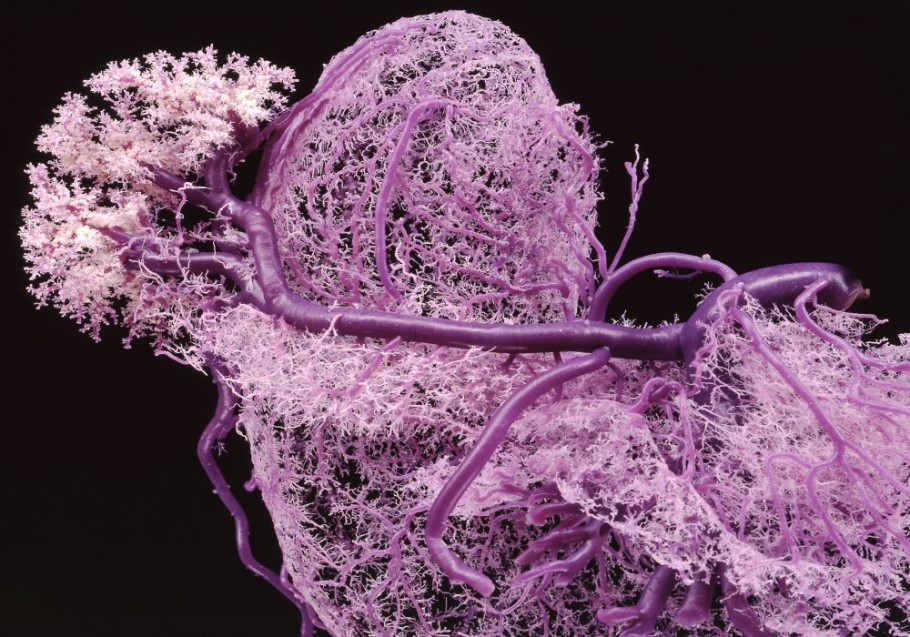
Researchers at University of Pennsylvania have announced a breakthrough in 3D Printing human organs, as they demonstrated how to generate blood vessels to give life to the surrounding tissue. Most previous examples of bioprinting had been limited to printing layer upon layer of thin tissue. Now that blood vessels can be printed, the team led by Jordan Miller & Christopher Chen, expect to be able to create thicker tissues and more complex organs such as a human liver.
The photo below from the Body Worlds exhibition shows the human vascular system as it should be inside our bodies. This inspired Miller to look at the problem differently and see how a similar structure for blood vessels could be generated first and then surrounded by tissue.

With this inspiration, the team set out to find the right material that would form a rigid structure when printed and also be non-toxic when it disolved. A mix of sugars (sucrose and glucose combined with dextran) proved suitable and was able to be printed using a modified RepRap 3D Printer.
Tissue cells within a gel mixture is poured around the mold, then the sugar is disolved before pumping blood cells through the vessels providing the much needed nutrients. Over time new capillary vessels formed to further expand it’s reach in the same way our bodies do.
Now the team will continue their work to explore how these artificial blood vessels can better link up with the natural vessels already existing in our bodies. Their work was published in the journal Nature Materials.
Source: Penn News & Twitter @jmil



We’d get some “thin wall” errors with that model wouldn’t we, eh, Shapeways?